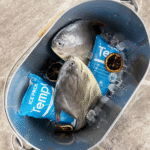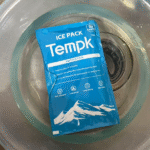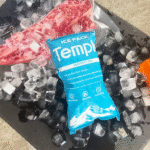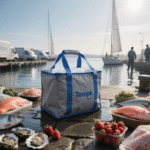Diisi air Paket es banyak digunakan dalam pengawetan makanan, transportasi farmasi dan bidang lainnya, dan kinerja pendinginan mereka secara langsung mempengaruhi pengalaman pengguna. Namun, Banyak konsumen menemukan bahwa waktu pendinginan es pack seringkali lebih pendek dari yang diharapkan. Masalah ini dapat disebabkan oleh berbagai faktor, dan memahami faktor -faktor ini dapat membantu mengoptimalkan efektivitas paket es Anda. Berikut adalah alasan utama mengapa waktu cooldown mungkin lebih rendah dari yang diharapkan:
1. Tidak memadai injeksi air
Waktu pendinginan kantong es berkaitan erat dengan jumlah air di dalam kantong es. Jika air tidak terisi, Paket es tidak akan dapat menyimpan energi dingin yang cukup, mengakibatkan berkurangnya kinerja pendinginan. Jika terlalu sedikit air, akan sulit bagi paket es untuk mempertahankan suhu rendah yang konsisten, yang secara alami akan memperpendek waktu pendinginan.

2. Bahan kompres es dan sifat insulasi
Bahan pembuat es secara langsung mempengaruhi waktu pendinginannya. Jika kantong es terbuat dari bahan dengan sifat insulasi yang buruk, panas luar dapat dengan mudah menembus, mengurangi efek pendinginannya. Kantong es berkualitas tinggi sering kali dibuat dari bahan seperti polietilen densitas tinggi (PE) atau polypropylene (Pp), yang memiliki daya tahan yang baik dan sifat isolasi yang membantu memperpanjang waktu pendinginan. Jika bahannya terlalu tipis atau kualitasnya buruk, waktu pendinginan akan dipersingkat secara signifikan.
3. Memengaruhi suhu eksternal
Kinerja pendinginan kantong es juga dipengaruhi oleh lingkungan sekitar. Di lingkungan yang panas, kompres es menyerap panas eksternal lebih cepat, sehingga waktu pendinginan menjadi lebih singkat. Jika kantong es terkena sinar matahari langsung atau diletakkan di dekat sumber panas, panas luar dengan cepat dipindahkan ke kantong es, mengurangi waktu pendinginannya.

4. Kondisi penyimpanan dan pra-pendinginan
Jika kantong es tidak didinginkan terlebih dahulu atau disimpan dengan tidak benar sebelum digunakan, kinerja pendinginannya akan terpengaruh. Kantong es harus disimpan di lingkungan yang sejuk untuk memastikan kapasitas pendinginannya cukup. Jika kantong es disimpan di lingkungan bersuhu tinggi atau tidak digunakan dalam waktu lama, efek pendinginannya akan terpengaruh secara signifikan.
5. Sering penggunaan dan tekanan eksternal
Frekuensi penggunaan dan tekanan eksternal juga dapat mempengaruhi waktu pendinginan kantong es. Sering digunakan atau tekanan eksternal, seperti benda berat yang menekan kantong es, dapat mengganggu pergerakan air di dalamnya, mengakibatkan pendinginan menjadi kurang efisien. Untuk menjaga kinerja tetap optimal, kantong es harus dilindungi dari tekanan atau gesekan yang berkepanjangan selama penggunaan.
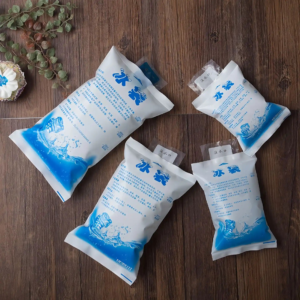
6. Suhu air dan suhu pendinginan awal
Suhu air yang digunakan dan suhu awal kantong es berpengaruh langsung terhadap waktu pendinginan. Jika suhu air terlalu tinggi, efek pendinginan dari kantong es akan berkurang secara signifikan. Demikian pula, jika kantong es itu sendiri bersuhu tinggi, akan membutuhkan waktu lebih lama untuk menjadi dingin, mengurangi waktu pendinginan.
7. Desain dan ukuran kantong es
Desain dan ukuran kantong es juga dapat mempengaruhi waktu pendinginannya. Kantong es yang lebih besar biasanya menyimpan lebih banyak energi dingin dan memberikan waktu pendinginan yang lebih lama. Kantong Xiaoice dengan kapasitas terbatas tentunya memiliki waktu pendinginan yang lebih singkat. Selain itu, bentuk dan struktur kantong es dapat mempengaruhi laju perpindahan panasnya, dan paket es yang dirancang dengan buruk dapat mempersingkat waktu pendinginan.
kesimpulan
Alasan mengapa durasi pendinginan kantong es berisi air tidak sesuai harapan sering kali berkaitan dengan faktor-faktor seperti jumlah pengisian air, kualitas bahan, lingkungan eksternal, dan metode penggunaan. Dengan mengontrol pengisian air dengan benar, memilih bahan berkualitas tinggi, menghindari lingkungan bersuhu tinggi, memastikan penyimpanan yang tepat, dan mengikuti pedoman penggunaan yang benar, konsumen dapat memperpanjang waktu pendinginan secara signifikan dan memastikan kinerja pendinginan yang optimal.


















